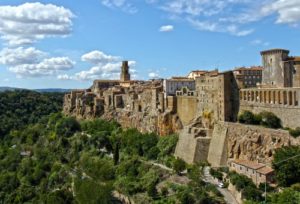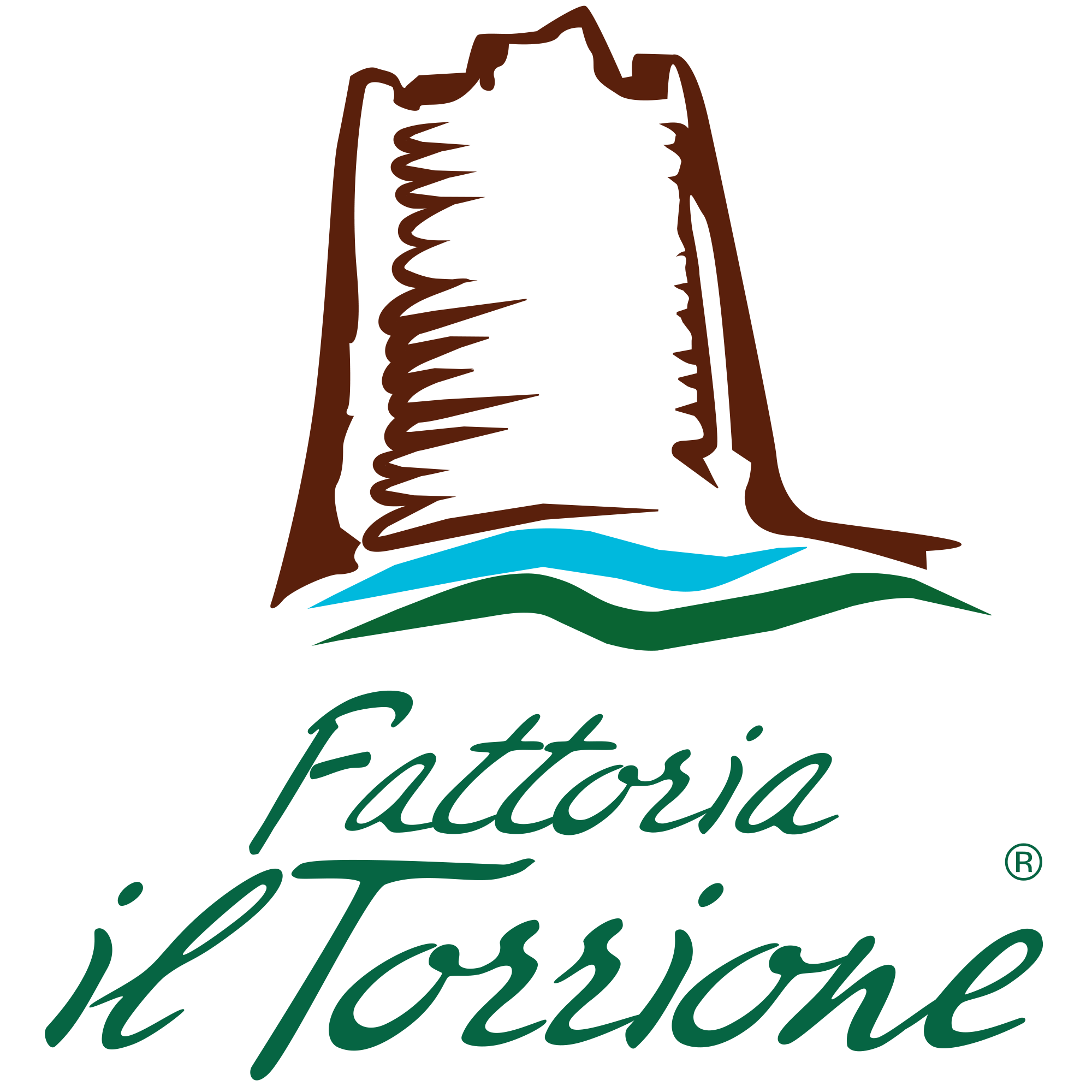 Pitigliano
Pitigliano
“La Piccola Gerusalemme” is a wonderful destination in the heart of the Tufo area, a short distance from the Terme di Saturnia and the Terme di Sorano. Pitigliano is one of the most beautiful villages in Italy and one of the most evocative and particular places in the Tuscan Maremma.
Pitigliano is a fascinating and evocative village, with ancient origins it is today one of the most iconic places in Tuscany and one of the most popular destinations for lovers of art, culture and nature. Perched on a tuff cliff, it dominates the valley crossed by the Lente, Meleta and Prochio streams and is a real spectacle to admire, especially at night, when it seems to be suspended in the void … the skyline of Pitigliano is in fact one of the most particular of the Maremma , and a photo is a must! Among the streets and alleys of the historic center of Pitiglianoyou can admire splendid ancient buildings, churches and historic buildings that tell the story of past centuries and the vicissitudes of the town and its lords, here every corner tells a story and every building is a precious example of art and architecture. One of the peculiarities of Pitigliano is certainly also represented by its Jewish Ghetto , the city in fact starting from the sixteenth century hosted a large Jewish community that lived here for many centuries building its own neighborhood with a Synagogue and many other sacred buildings, still existing today. and can be visited.
What to see in Pitigliano
Pitigliano is unmistakable, already from your arrival you will admire the imposing tuff rock that supports and merges with the town and the arches of the Medici Aqueduct , among its alleys you will have the opportunity to admire wonderful examples of medieval and Renaissance art, such as the Palazzo Orsini , which was the official residence of the homonymous family in Pitigliano , the Church of San Rocco , which is the oldest sacred building in the whole country, the Cathedral of Saints Peter and Paul , the museums and the beautiful Jewish Ghetto .
- PALAZZO ORSINI. The fortress was built in the fourteenth century by the Aldobrandeschi and was remodeled in 1500 by the Orsini counts who made it their official residence. The building now houses the Diocesan Museum and the Museum of Etruscan Civilization.
- DIOCESAN MUSEUM. The museum houses a rich collection of sacred works of art from the parishes of the diocese of Pitigliano – Sovana – Orbetello. In some of the rooms of the museum some precious frescoes from the fifteenth century have been restored.
- MUSEUM OF ETRUSCAN CIVILIZATION. This museum collects an important collection donated by the Vaselli family, with objects found in the necropolis of Poggio Buco around the 1950s, and many other finds from archaeological sites around Pitigliano.
- OPEN AIR MUSEUM A.MANZI. It is located just outside the village of Pitigliano, it is an archaeological park dedicated to one of the most important figures in the history of Pitigliano, Alberto Manzi, educator (many will remember him for the broadcast broadcast on Rai “Non è Mai Troppo Tardi”) and mayor of Pitigliano between 1995 and 1997. The park houses the reconstruction of a Bronze Age hut and a typical Etruscan house, it is connected via a quarry road to two important Etruscan necropolises.
- JEWISH GHETTO. Pitigliano is nicknamed “The Little Jerusalem” because in the mid 1500s it hosted a large Jewish community that remained permanently in the village until the end of the 1800s. Today there are only a few members of the Jewish religion left in the town but the ghetto is still very much alive and active. , with the Synagogue (which can still be visited today except on Saturdays and with a section intended as a museum of Jewish culture), the Forno delle Unzzime, the Milkve Bath and the Cellar.
- CATHEDRAL OF SAINTS PETER AND PAUL. Built starting from 1276, the church has been remodeled many times over the centuries, one of the most important restorations was carried out by Niccolò III Orsini. Inside the church there are precious paintings made by important local artists, some works by Pietro Aldi and Francesca Ciacci.
- CHURCH OF SAN ROCCO. It is the oldest church in Pitigliano, built in the 12th century. It was completely restored in the 16th century at the behest of Niccolò III Orsini based on a project by the architect Giovanni da Traù il Dalmata. The interior of the church is very particular due to the presence of the stars of the most important families who ruled the city, in the center the great coat of arms of the De’Medici family stands out.
- MEDICEAN AQUEDUCT. This is the greatest hydraulic engineering work built in Pitigliano by the De’medici family. It was built between 1636 and 1639 and was the very first aqueduct of the Tuscan Maremma. It consists of two large arches and thirteen smaller arches that run on the left side.
History
The territory was inhabited since the middle of the Bronze Age (about XVII century BC), it was abandoned during the Iron Age and immediately reoccupied starting from the second half of the VIII century BC. The area in fact boasted an important strategic position for trade and communications with the city of Vulci and the Tiber Valley. In the Etruscan era it experienced a period of great development and prosperity, as evidenced by the presence of the numerous necropolises and the rich funeral accessories that have been found in the tombs. Pitigliano is mentioned for the first time in an official document in 1061, in a bull of Pope Nicholas II. Starting from 1200 Pitigliano became part of the Aldobrandeschi possessions while always remaining the subject of disputes between the Sienese and Orvieto powers. In 1274 the county was divided between Bonifazio and Ildebrandino Guglielmo and Pitigliano was placed under the control of the latter, in the county of Sovana under which it remained until the marriage between Anastasia, daughter of Margherita Aldobrandeschi, and Romano di Gentile Orsini, when it passed in fact under the control of the Orsini family, becoming the official capital of the county. The government of the Orsini in Pitigliano was not easy, often despotic and too rigid, they often saw the aversion of the local population and towards the end of 1500 the local population, in search of protection, sought the help of the de’Medici family who in 1608 he managed to obtain the property as a concession from Gian Antonio Orsini, who ceded the city in exchange for the settlement of his numerous debts. in the county of Sovana under which it remained until the marriage between Anastasia, daughter of Margherita Aldobrandeschi, and Romano di Gentile Orsini, when it passed under the control of the Orsini family, becoming the official capital of the county. The government of the Orsini in Pitigliano was not easy, often despotic and too rigid, they often saw the aversion of the local population and towards the end of 1500 the local population, in search of protection, sought the help of the de’Medici family who in 1608 he managed to obtain the property as a concession from Gian Antonio Orsini, who ceded the city in exchange for the settlement of his numerous debts. in the county of Sovana under which it remained until the marriage between Anastasia, daughter of Margherita Aldobrandeschi, and Romano di Gentile Orsini, when it passed under the control of the Orsini family, becoming the official capital of the county. The government of the Orsini in Pitigliano was not easy, often despotic and too rigid, they often saw the aversion of the local population and towards the end of 1500 the local population, in search of protection, sought the help of the de’Medici family who in 1608 he managed to obtain the property as a concession from Gian Antonio Orsini, who ceded the city in exchange for the settlement of his numerous debts. when it passed under the control of the Orsini family, becoming the official capital of the county. The government of the Orsini in Pitigliano was not easy, often despotic and too rigid, they often saw the aversion of the local population and towards the end of 1500 the local population, in search of protection, sought the help of the de’Medici family who in 1608 he managed to obtain the property as a concession from Gian Antonio Orsini, who ceded the city in exchange for the settlement of his numerous debts. when it passed under the control of the Orsini family, becoming the official capital of the county. The government of the Orsini in Pitigliano was not easy, often despotic and too rigid, they often saw the aversion of the local population and towards the end of 1500 the local population, in search of protection, sought the help of the de’Medici family who in 1608 he managed to obtain the property as a concession from Gian Antonio Orsini, who ceded the city in exchange for the settlement of his numerous debts.
